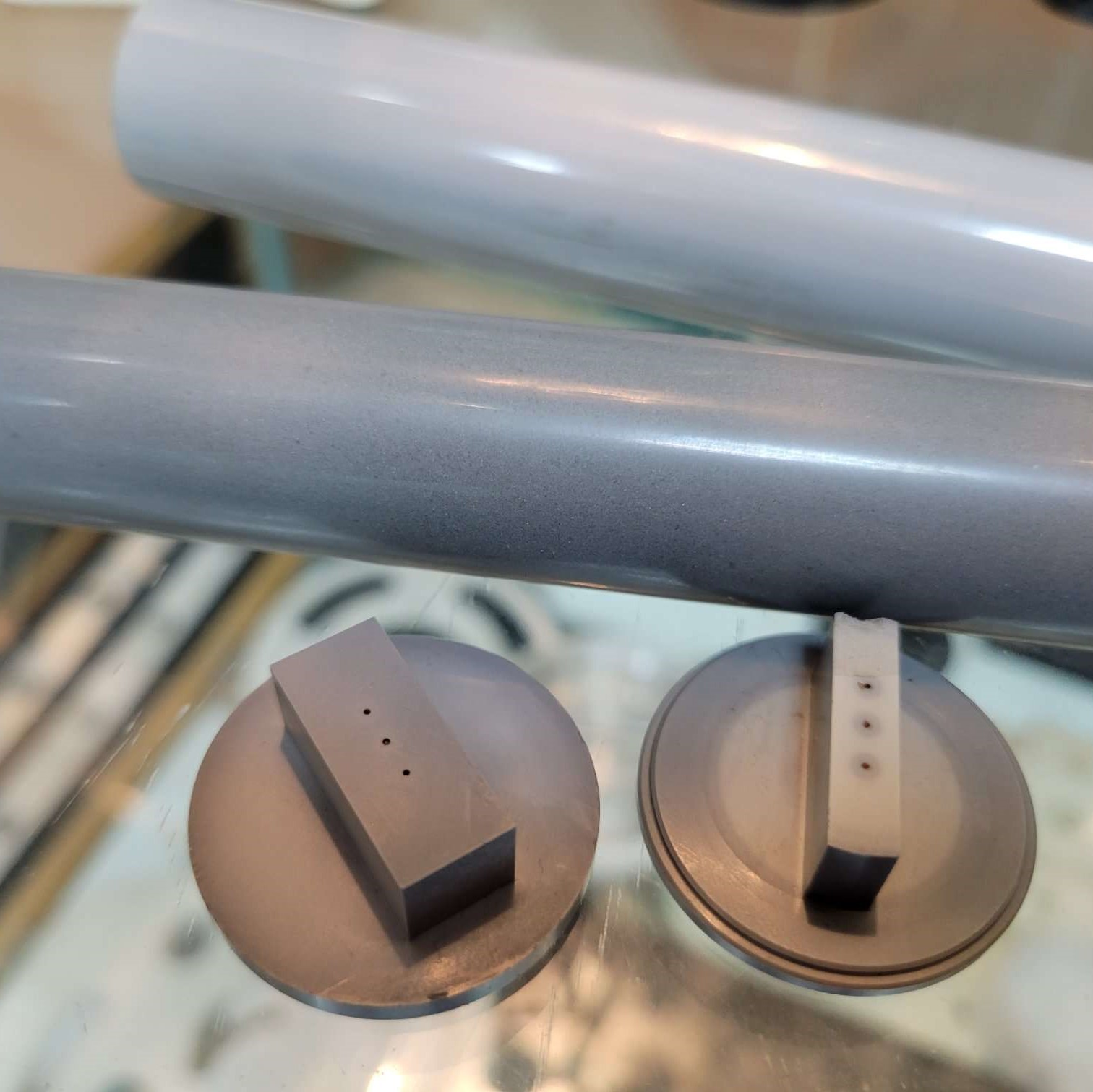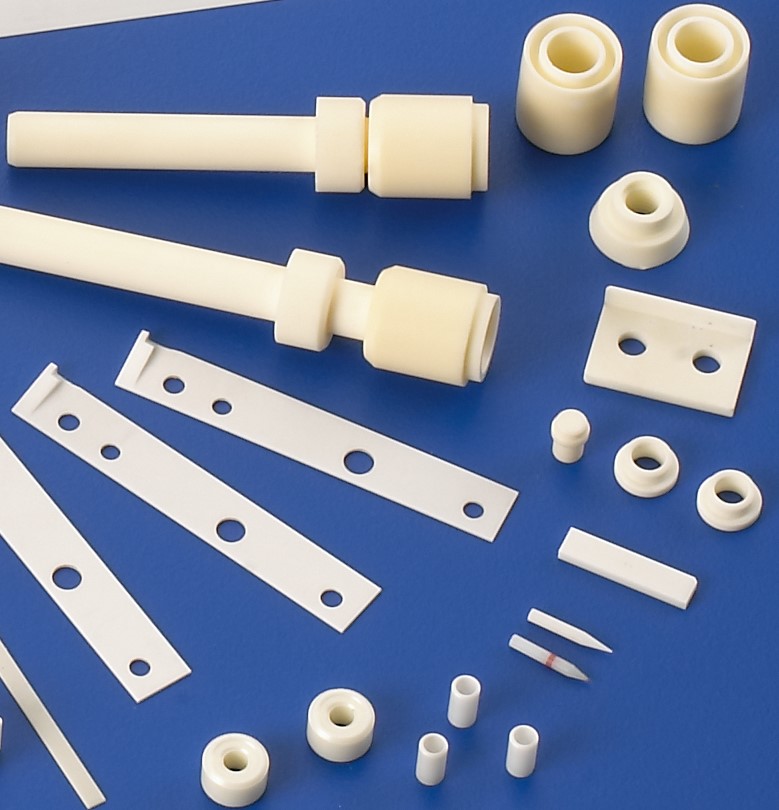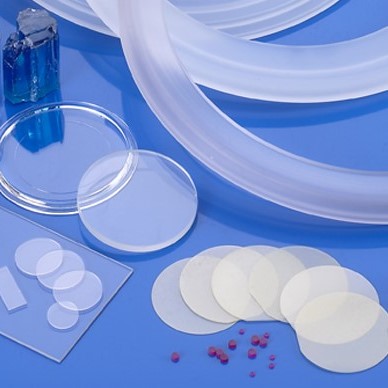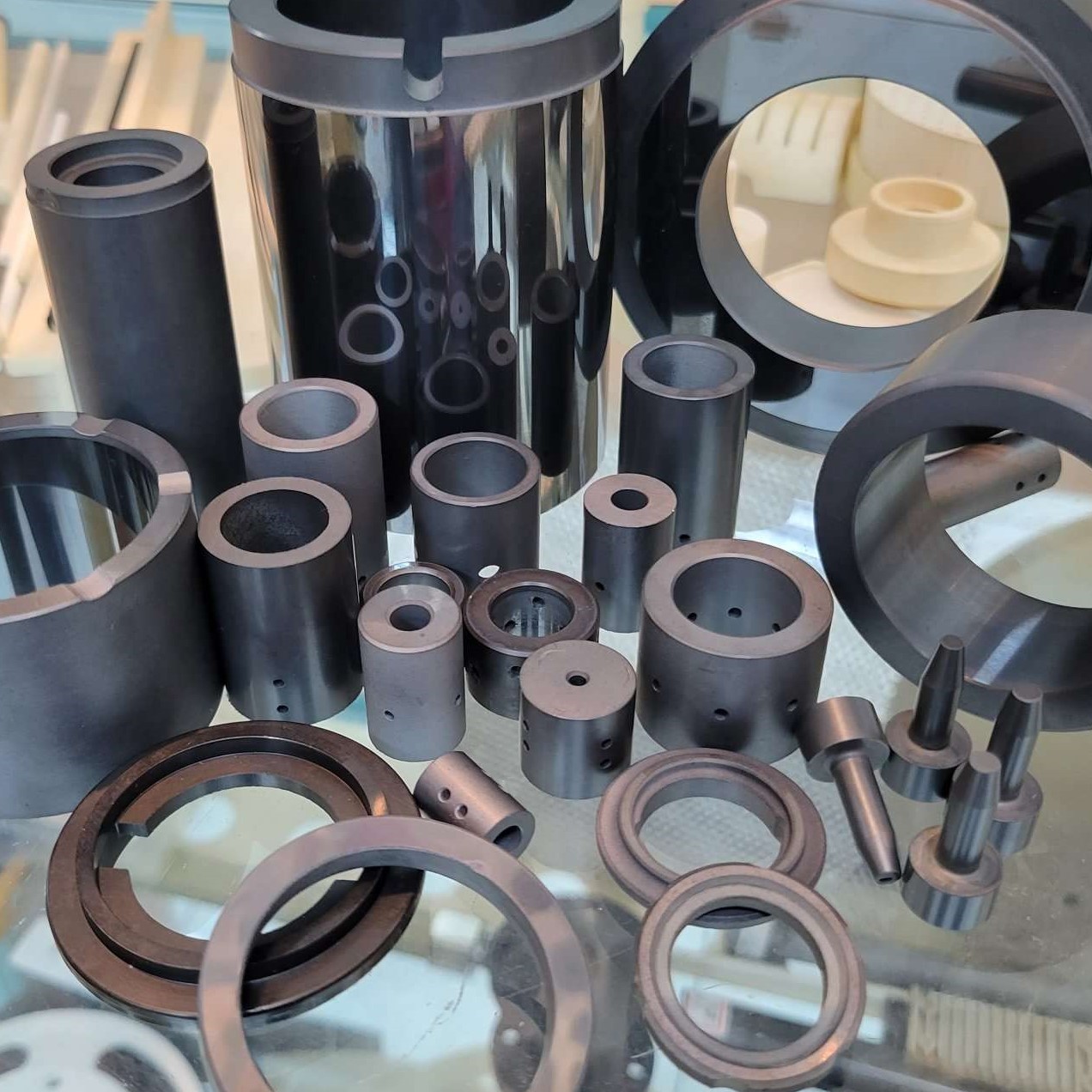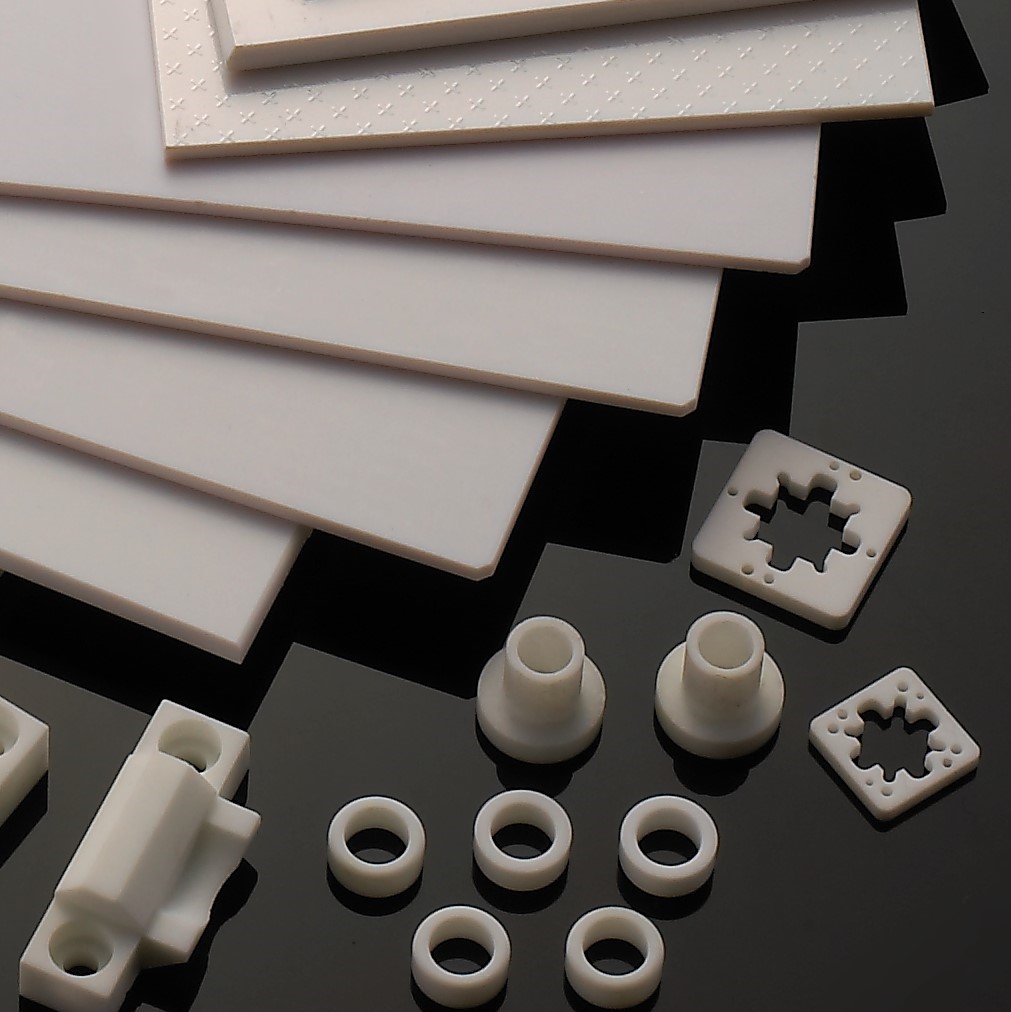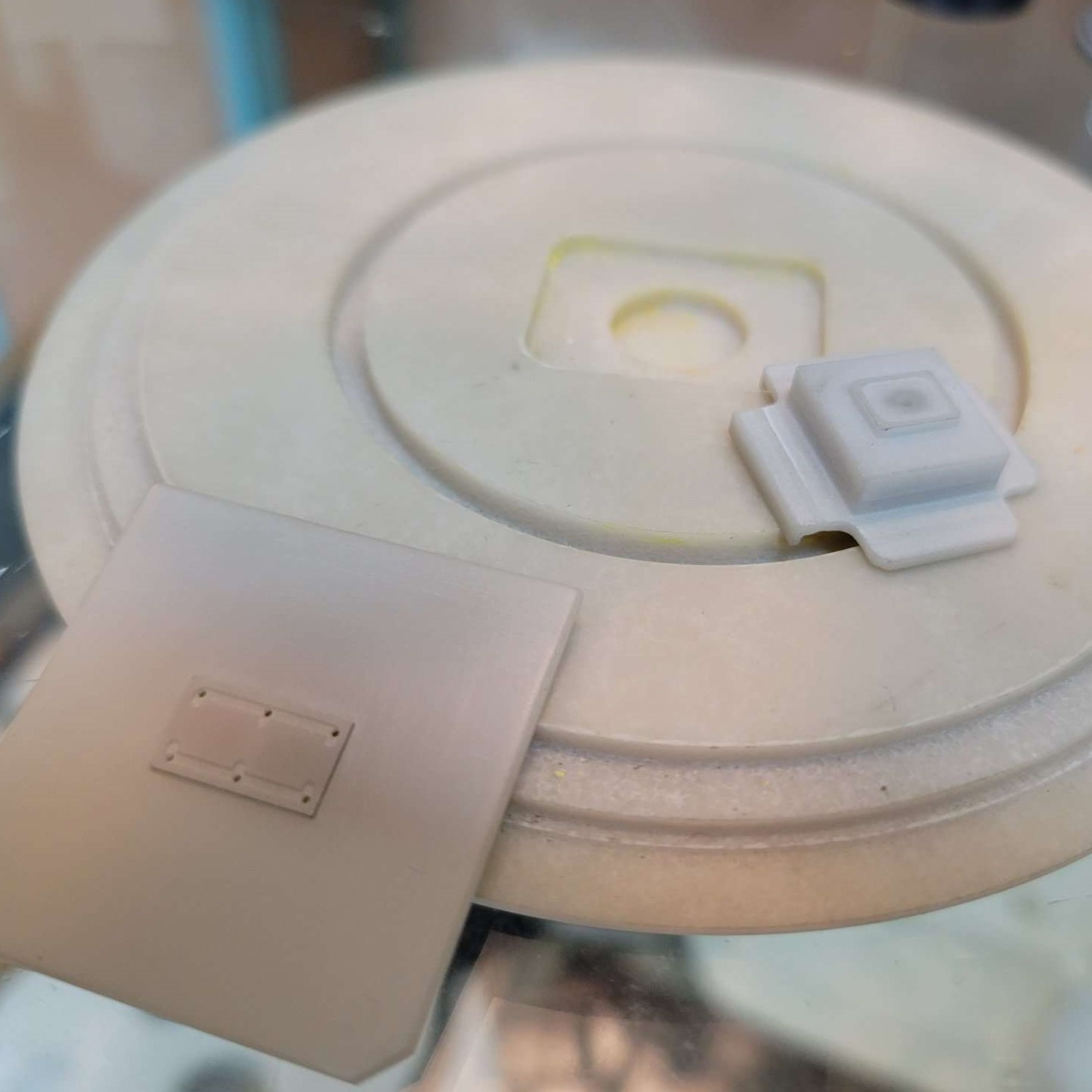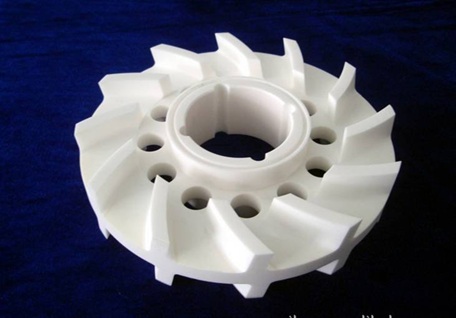Si3N4
Material Characteristics
For the high-power semiconductor industry, there is currently a significant demand for specialized ceramic substrate materials, such as aluminum nitride (AlN) and silicon nitride (Si3N4). α-Al2O3 (alumina) is a commonly used structural ceramic material, but its thermal conductivity is only 20–30 W/m·K, and its coefficient of thermal expansion is relatively high, making it unsuitable for high-power component environments with extreme heat generation. As alternatives, aluminum nitride (AlN) and silicon nitride (Si3N4) have emerged:
Aluminum Nitride (AlN) boasts a thermal conductivity as high as 150–230 W/m·K and a coefficient of thermal expansion of 4.6×10⁻⁶/K, which is close to that of third-generation semiconductor materials like SiC and GaN. However, its flexural strength of 350 MPa and fracture toughness of 2.7 MPa·m¹/² result in relatively low reliability performance. Therefore, improving the mechanical strength of AlN is a key area for development.
Silicon Nitride (Si3N4), on the other hand, exhibits excellent flexural strength (600–800 MPa) and fracture toughness (6.0–8.0 MPa·m¹/²), enabling outstanding reliability performance under thermal shock cycling tests, with over 5,000 cycles.
Material Applications
Silicon nitride (Si₃N₄) ceramic materials exhibit excellent properties such as high thermal stability, strong oxidation resistance, and high dimensional accuracy. Due to its strong covalent bonding and the formation of a protective oxide layer in air, silicon nitride also demonstrates remarkable chemical stability. It remains resistant to oxidation below 1200°C, while between 1200°C and 1600°C, a protective oxide layer forms, preventing further oxidation. Additionally, it is not wetted or corroded by many molten metals or alloys, including aluminum, lead, tin, silver, brass, and nickel. However, it can be corroded by molten magnesium, nickel-chromium alloys, stainless steel, and similar materials.
Silicon nitride ceramics are widely used in high-temperature engineering components, advanced refractory materials in the metallurgical industry, corrosion-resistant and sealing parts in chemical engineering, as well as cutting tools and blades in mechanical machining. Since silicon nitride forms strong bonds with materials such as silicon carbide (SiC), alumina (Al₂O₃), thorium dioxide (ThO₂), and boron nitride (BN), it can serve as a bonding material, modified in various compositions to enhance performance.
Furthermore, silicon nitride has applications in solar cells. When a silicon nitride film is deposited via plasma-enhanced chemical vapor deposition (PECVD), it not only acts as an anti-reflective coating to reduce light reflection but also introduces hydrogen atoms—a byproduct of the deposition process—into both the silicon nitride film and the silicon wafer, effectively passivating defects. The stoichiometric ratio of silicon to nitrogen in the film is not strictly 4:3 but varies within a certain range depending on process conditions, resulting in different physical properties for the deposited film.
Material Data
Properties | Units | Silicon Nitride(Si3N4) |
| |||
RBSN | SSN | HPSN | ||||
Mechanical | Density | g/cm3 | 2.3 | 3.2 | 3.3 | |
Color | — | Gray | Gray | Gray | ||
Water Absorption | % | 0 | 0 | 0 | ||
Hardness | Gpa | 12.7 | 14 | 14 | ||
Flexural Strength (20°C) | Mpa | 190 | 700-800 | 700-950 | ||
Compressive Strength (20°C) | Mpa | 2500 | 3200 | 3200 | ||
Thermal | Thermal Conductivity (20°C) | W/m°k | 14 | 26-42 | 35-42 | |
Thermal Shock Resistance (20°C) | ∆T(°C) | 330 | 530-610 | 540-650 | ||
Maximum Use Temperature | °C | 1400 | 1400 | 1400 | ||
Electrical | Volume Resistivity (20°C) | Ω-cm | >1012 | >1012 | >1012 | |

